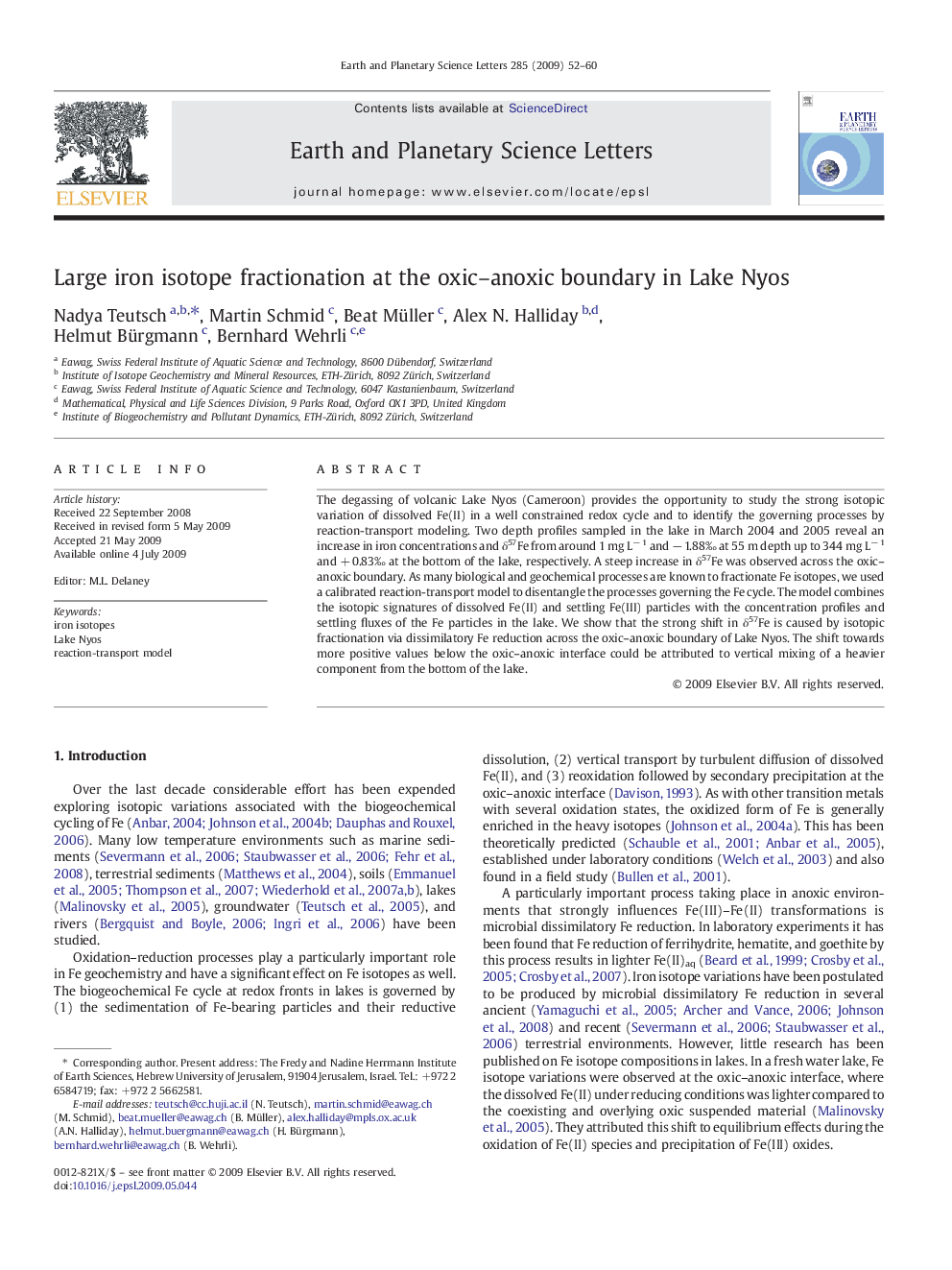| Article ID | Journal | Published Year | Pages | File Type |
|---|---|---|---|---|
| 4679167 | Earth and Planetary Science Letters | 2009 | 9 Pages |
The degassing of volcanic Lake Nyos (Cameroon) provides the opportunity to study the strong isotopic variation of dissolved Fe(II) in a well constrained redox cycle and to identify the governing processes by reaction-transport modeling. Two depth profiles sampled in the lake in March 2004 and 2005 reveal an increase in iron concentrations and δ57Fe from around 1 mg L− 1 and − 1.88‰ at 55 m depth up to 344 mg L− 1 and + 0.83‰ at the bottom of the lake, respectively. A steep increase in δ57Fe was observed across the oxic–anoxic boundary. As many biological and geochemical processes are known to fractionate Fe isotopes, we used a calibrated reaction-transport model to disentangle the processes governing the Fe cycle. The model combines the isotopic signatures of dissolved Fe(II) and settling Fe(III) particles with the concentration profiles and settling fluxes of the Fe particles in the lake. We show that the strong shift in δ57Fe is caused by isotopic fractionation via dissimilatory Fe reduction across the oxic–anoxic boundary of Lake Nyos. The shift towards more positive values below the oxic–anoxic interface could be attributed to vertical mixing of a heavier component from the bottom of the lake.
